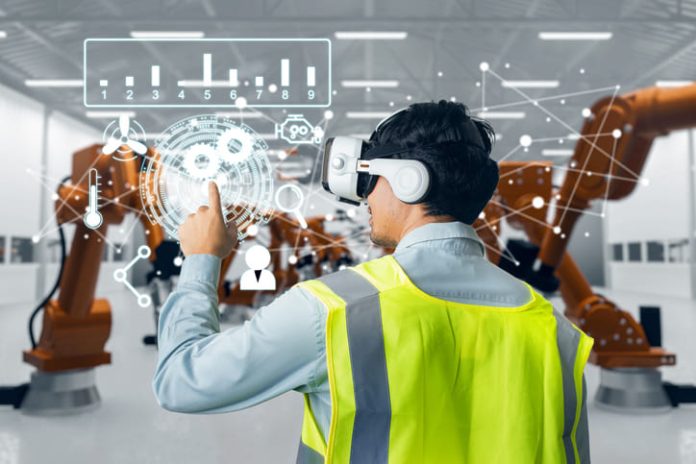With each day bringing a new twist in how we protect one another at work, adapting our teaching techniques becomes not just wise but essential—readying us all for whatever comes next. While old-school methods lay a good foundation, they often miss the mark in really engaging learners or giving them that crucial hands-on experience which could save lives. Thanks to Virtual Reality (VR), there’s a fresh direction taking shape in how we do safety drills across numerous trades. Safety training is getting a major upgrade thanks to VR. It puts us smack dab in the middle of realistic settings and danger-filled simulations without any real risk—turning what was once mundane into an exciting adventure that sticks.
The Challenges of Traditional Safety Training
Traditional safety training, often characterized by classroom settings and static learning materials, faces significant limitations. For one, it struggles with engagement—lectures and videos can only capture attention to an extent. More critically, these conventional methods lack the practical experience component. Trainees are often expected to translate theoretical knowledge into practice in high-stake situations without ever having physically practiced the tasks. Failing to fill this gap means being caught off guard in emergencies, lacking critical foresight.
Understanding Virtual Reality Technology
Virtual Reality technology immerses users in a simulated 3D environment where they can interact with virtual elements and scenarios using specialized devices such as VR headsets, gloves, and sometimes full-body suits. By creating environments that engage sight, sound, and touch in such convincing ways, VR pulls off something truly special—it wraps users up in settings almost indistinguishable from actual places or scenarios. Imagine practicing your skills in a setting that feels as good as real—that’s what makes VR indispensable for experiential training programs.
The Power of VR in Training Programs
The biggest perk of VR technology in safety training? Its ability to pull you right into the experience. Picture this: tackling emergencies and mastering safety routines in a world where mistakes have zero consequences. Thanks to VR, this kind of stress-free yet effective training is not just possible—it’s transforming how we prepare for real-life dangers. Trainees get to practice the tricky parts as many times as needed, building their skills in a safe zone without any real-world danger. Through interactive experiences online, learners don’t just memorize the steps; they actually get to practice and perfect them.
Real-World Applications: VR in Action
Industries such as construction, manufacturing, and aviation have already begun to adopt VR to enhance their safety training programs. For example, in construction, VR simulators can immerse workers in high-risk scenarios like working from heights or operating heavy machinery, allowing them to gain familiarity with the equipment and environment safely. Imagine strapping on a VR headset and suddenly you’re training for emergencies or putting out fires as an aviation crew member – all in total safety but with lifelike scenarios.
VR Training Software: The Heart of the Experience
At the core of VR’s effectiveness in safety training is the software that drives these immersive simulations. This software crafts lifelike, engaging scenarios that hit the mark for any industry’s safety training demands. Imagine moving through a digital space as naturally as you do in the physical world – advanced software and intuitive controls make this possible today. The availability of both custom and off-the-shelf VR safety training solutions like Pixaera means organizations can choose options that best fit their specific requirements. Custom solutions allow for highly detailed simulations specific to the company’s operational environment, while off-the-shelf options offer cost-effective, easily deployable training modules for common safety scenarios across industries.
Key Benefits of Using VR for Safety Training
Increased Retention: The immersive and interactive nature of VR training significantly enhances learning retention rates compared to traditional methods. Making learning stick means tapping into our senses; it’s what keeps the lesson alive in our minds long after we’ve left the classroom.
Risk-Free Environment: Practicing in a safe space lets learners face tough challenges without any actual danger, making mishaps less likely during training and beefing up their sureness in such moments.
Scalability: VR training modules can be easily scaled and distributed across locations, providing standardized training experiences for employees worldwide without the need for physical presence or replication of complex setups.
Overcoming Obstacles: Accessibility and Cost
Despite its numerous benefits, VR’s implementation in safety training does face obstacles, primarily related to cost and accessibility. The initial investment for VR hardware and software development or purchase can be significant. Making sure everyone can use the equipment comfortably and without getting lost or feeling uneasy is also a tough nut to crack.
However, these obstacles are increasingly surmountable. As VR technology becomes cheaper, it’s now within reach for a broader mix of groups. In response to feedback about discomfort with VR tech, developers have rolled up their sleeves. They’re focusing on crafting interfaces that anyone can jump into comfortably—no headaches or dizziness included. Don’t let a slim budget hold you back; smart financing strategies and lease offers mean that accessing cutting-edge VR isn’t just possible—it’s practical.
The Future of VR Safety Training
Looking ahead, the future of VR in safety training appears even more promising. Imagine classrooms that adapt to you – that’s the magic AI brings to education, constantly evolving to offer experiences that are both engaging and effective. Imagine an AI that watches over your shoulder as you learn, ready to point out the slips and celebrate the wins. This isn’t just feedback; it’s guidance tailored just for you, adapting every step of the way. Wearable technology is stepping up the game for VR training. It brings in physical touches—think feeling the heat of a simulated fire or the shake of an earthquake—to make everything seem more real.
Implementing VR Safety Training in Your Organization
Organizations considering VR for safety training should start with a thorough assessment of their needs and resources. Identifying specific training goals and understanding the cost implications are crucial first steps. By testing the waters with trial runs, we can see if VR training hits the mark or falls flat before going all in across the company.
Conclusion
Let’s tie this off by saying success in prime property circles means always being ready for action – spotting trends, figuring out folks’ needs before they do, and making magic happen with top-notch service.
Imagine transforming safety drills with VR tech – it’s not just a possibility; it’s happening and reshaping how we prepare for emergencies. VR kicks traditional training to the curb by offering experiences that are not just engaging but super effective, making learning immersive and interactive. Tech advancements are not slowing down anytime soon – especially when it comes to virtual reality shaking up traditional safety drills. Soon enough, learning how to dodge dangers on the job might just involve putting on some high-tech goggles. To truly protect your greatest treasure—your team—exploring how virtual reality can strengthen your safety practices is a smart move no business should ignore. Businesses nowadays invest heavily in nurturing their employees because they understand how crucial a motivated team is to success.




































